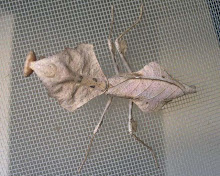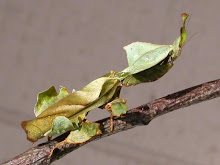Mantids will consume any insect. If released in very large numbers they will cause a reduction in number of pest insects. Apply mantids of several sizes for the best results. Release several hundred in batches through out the season as smaller mantids will consume aphids, fruit flies, mites, gnats and mosquitoes. Larger mantids consume flying roaches, crickets, some species of grasshopper, some species of beetles, moths, flies and other larger insects. Rarely, mantids will consume small birds. It is much more common, however, for birds to consume mantids. USDA lists mantids as a beneficial insect.
When releasing mantids into the garden it is best to hatch oothecae (plural for ootheca, egg case) When placing oothecae into the garden they should be placed in partial shade. Areas frequented by ants or small predatory wasps should be avoided. Predatory wasps deposit eggs into mantis ootecae. Some gardeners find it best to hatch mantids indoors then release them outdoors at night 24 hours or so after the hatch is complete. Some people claim that mantids are not efficient as beneficial insects. This will depend on the number of mantids released, how often they are released, positioning of the ootheca when there is human intervention and under what conditions the oothecae are hatched.
Gardeners will often search for oothecae and carefully move them while still connected to their holding structure and place them in the refrigerator to prevent premature hatching. The ootheca will keep the unborn nymphs alive in the refrigerator until the spring arrives and they are ready to hatch. This allows for the mantis nymphs to be born in the garden and spend their lives protecting the plants from insects that may harm the vegetation. Hundreds of thousands of dollars per year are spent by gardening enthusiasts who find the release of mantids to be effective.
skip to main |
skip to sidebar
mantis,carnivorous insect,prayer-like,small insects,fruit flies,aphids,micro crickets,locus,wax worms,Dead Leaf mantis,Tropical,Venezuelan,Boxer mantis,Cameroon,Asian,Tropical shield,Flower,Indian,Twig,Grizzled ,Indo-Pacific,Jumpy,Devil's Flower,Mediterranean,European,South African,Egyptian,Peruvian,Ghost,Malaysian,Arizona ,unicorn,California,Florida,
.jpg)
.jpg)
.jpg)